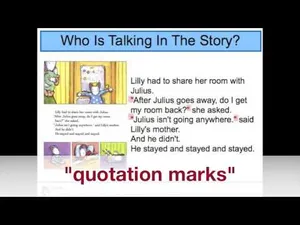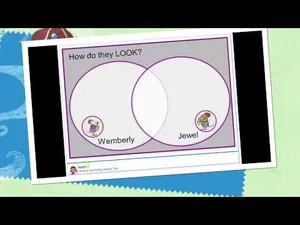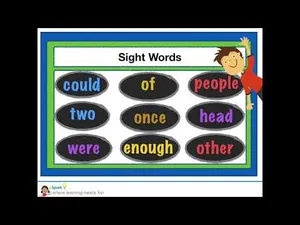Retelling Stories & Finding the Lesson
Retell Stories
K.7.A and 4 more
Rhythm and Meaning
Rhythm and Alliteration
K.2.A and 2 more
Sounds in Words
Sounds You Hear in Words
1.2.A and 1 more
Images Add Meaning RI 1st Grade
Use Images to Understand a Text
1.2.D and 1 more
Who is Talking in a Story
Identify Who's Telling the Story
1.6.F and 1 more
Compare & Contrast Characters in a Story
Compare and Contrast Characters
1.6.E and 1 more
Describing the Relationship of Events: Sequencing
Logical Connections
1.9.D and 1 more
What's the Story?
Explore Story Structure
1.8.C and 1 more
Ask & Answer Questions RI 1st Grade
Answer Questions About Stories
1.6.B and 1 more
Intro to Asking and Answering Questions
Answer Questions About Stories
1.6.B and 1 more
How to Find Key Details
Use Images To Explain a Text
1.6.G and 1 more
The Power to Know the Hour
Tell Time to the Hour and Half-Hour
1.7.E
Details in Illustrations
Images Help You Read
1.9.D
Author's Purpose 1st Grade
Identify Author's Purpose
1.6.H
Blending Sounds to Make Words
Blend Sounds to Make Words
1.2.B
Introduction to Number Bonds
Decomposing Numbers
K.2.I
Making Connections
Make Connections
1.6.H
Feelings in Stories
Find Feeling Words in Stories
1.9.B
Sight Words 1st Grade
Sight Words
1.2.C
Educational Activities and Teaching Resources for 1st Grade
Welcome to 1st grade! First graders can do way more than just count by the end of the year, they can add and subtract in their heads, put two triangles together to make a square, and even tell you (give or take an hour) what time it is. First grade math standards throughout the country build on early number sense work, addition and subtraction with small numbers, place value understanding, simple measurement and time, and spatial reasoning, to lay a strong foundation for more complex work in years to come.
When it comes to reading, forget those nervous, new-to-school vibes. First graders are seasoned vets who know a thing or two about how the classroom works. Reading groups are where the magic happens. First grade is an exciting time in a young reader's journey to literacy. Many students will be transitioning from guided to independent reading, learning how to read familiar stories with understanding and purpose. Print concepts and the ability to decode more complex words will also be developed.
Some of the skills students will master in eSpark include:
Math
- Adding and subtracting up to 20
- Solving word problems
- Developing number sense skills with number bonds and other strategies
- Understanding place values
- Finding unknown addends
- Comparing numbers and differentiating less than, equal to, and greater than
- Measuring and sorting by lengths
- Creating simple graphs and charts
- Telling time to the hour and half-hour
- Drawing, building, and dividing shapes
Reading
- Asking and answering questions about texts
- Retelling and describing stories, including key details, characters, settings, and events
- Identifying the narrator and point of view
- Using illustrations and pictures to better understand texts
- Comparing and contrasting texts
- Recognizing features of a sentence, including capitalization and simple punctuation
- Segmenting words into phonemes
- Knowing the spelling-sound correspondence for common digraphs
- Recognizing sight words
- Self-correcting while reading
- Using common verb tenses, affixes, and inflections
- Leveraging context clues
- Distinguishing shades of meaning
eSpark is truly unique in the world of online learning. Our holistic, student-centered approach blends the proven benefits of play-based learning with systematic, explicit, and direct instruction. It’s proof that learning can be fun, personalized, and effective, all at once!
eSpark meets the criteria for evidence-based interventions under ESSA guidelines, and has been proven in multiple studies to improve student performance in math and reading.
When you sign up for an eSpark account, your students experience these activities via adaptive, differentiated independent pathways and teacher-driven small group assignments. Teachers also have access to detailed usage and progress reports with valuable insights into standards mastery, student growth trends, and intervention opportunities.
With the addition of the game-changing Choice Texts for the 2023-2024 school year, eSpark has cemented its status as the most loved supplemental instruction option for students and teachers alike. Claim your free account today and see the difference for yourself!





















